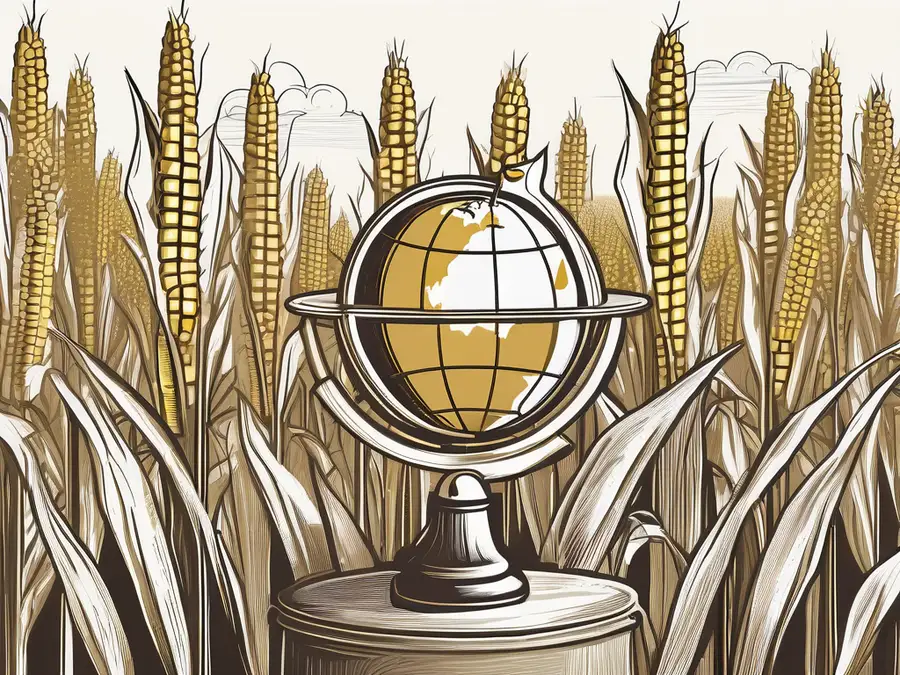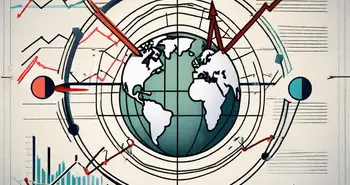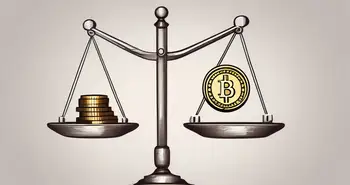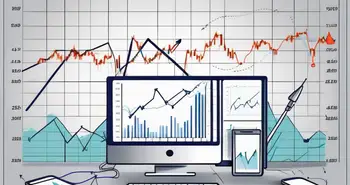Corn Trading and Investing Strategies

Corn trading is a fascinating and lucrative field for investors and traders alike. Whether you're new to the market or a seasoned pro, understanding the ins and outs of corn trading is essential for success. In this ultimate guide, I'll take you through everything you need to know about corn trading, from the basics to advanced strategies.
Understanding the Basics of Corn Trading
Before we dive into the nitty-gritty details, let's start with the basics of corn trading.
Corn trading involves buying and selling corn futures contracts on various commodities exchanges. A futures contract is a legally binding agreement to buy or sell a specified quantity of corn on a future date at a predetermined price. It allows traders to speculate on the price movements of corn without physically owning or delivering the commodity.
But why is corn trading so important? Let's explore the significance of corn in the global market.
The Importance of Corn in the Global Market
Corn is one of the most crucial crops in the global market, serving as a staple food for both humans and livestock. Its versatility and wide range of uses make it a commodity with high demand and significant economic impact.
First and foremost, corn is a staple food for many people around the world. It is a key ingredient in various food products, such as cornmeal, cornflakes, and corn syrup. Additionally, corn is a vital component of animal feed, providing essential nutrients for livestock.
Furthermore, corn plays a significant role in the production of biofuels. With the increasing focus on renewable energy sources, corn-based ethanol has become a popular alternative to fossil fuels. This demand for corn in the biofuel industry has added another layer of complexity to the corn trading market.
Understanding the significance of corn in the global market is vital for trading success. Factors such as population growth, changing dietary patterns, and biofuel production all influence the demand for corn and, consequently, its price.
Key Terms in Corn Trading
Before delving deeper into corn trading, it's important to familiarize yourself with some key terms:
- Long Position: When a trader buys a futures contract, expecting the price of corn to rise.
- Short Position: When a trader sells a futures contract, anticipating the price of corn to decline.
- Margin: The initial deposit required to enter a futures contract. It acts as a form of collateral to cover potential losses.
- Settlement: The process of closing a futures contract by either physical delivery or cash settlement. Physical delivery involves the actual transfer of corn, while cash settlement involves offsetting the contract's value with a cash payment.
- Speculation: The act of trading corn futures contracts based on anticipated price movements, without the intention of physical delivery.
- Hedging: A risk management strategy used by farmers, producers, and consumers to protect against adverse price movements. It involves taking an opposite position in the futures market to offset potential losses in the physical market.
By familiarizing yourself with these key terms, you'll be better equipped to navigate the world of corn trading and make informed decisions.
The Corn Trading Process
Now that we've covered the basics, let's take a closer look at the corn trading process.
Steps in Corn Trading
Corn trading involves several steps, including:
- Market Research: Stay updated on market news and analyze market trends to identify potential opportunities.
- Developing a Strategy: Determine your trading strategy based on your risk appetite, goals, and market conditions.
- Placing Orders: Execute your trades by placing orders through a brokerage platform or directly on the exchange.
- Monitoring Positions: Keep a close eye on your open positions and adjust your trading strategy if necessary.
- Exiting Trades: Close your positions at a profit or loss based on your predetermined exit strategy.
The Role of Corn Exchanges
Corn trading typically occurs on commodities exchanges, such as the Chicago Board of Trade (CBOT) and the Kansas City Board of Trade (KCBT). These exchanges provide a centralized platform for buyers and sellers to trade corn futures contracts.
Understanding Corn Futures Contracts
Corn futures contracts specify the quantity and quality of corn to be delivered at a future date. They also establish the terms and conditions for delivery, such as the delivery location and the grade of corn. Understanding the intricacies of corn futures contracts is crucial for successful trading.
Strategies for Successful Corn Trading
Now that you have a good grasp of the corn trading process, let's explore some strategies for successful trading.
Fundamental Analysis in Corn Trading
Fundamental analysis involves examining various factors that can impact corn prices, such as supply and demand, weather conditions, government policies, and global economic trends. By analyzing these factors, traders can make informed decisions about when to buy or sell corn futures contracts.
Technical Analysis in Corn Trading
Technical analysis involves studying historical price data, chart patterns, and technical indicators to identify trends and price patterns. This helps traders anticipate future price movements and make more accurate trading decisions.
Risk Management in Corn Trading
Risk management is a crucial aspect of corn trading. It involves setting stop-loss orders, diversifying your portfolio, and managing leverage to minimize potential losses. Implementing effective risk management strategies can help protect your capital and ensure long-term profitability.
The Impact of Seasonality on Corn Prices
Seasonality plays a significant role in corn prices. Understanding how the corn growing cycle and weather patterns affect prices is essential for traders.
The Corn Growing Cycle and Its Impact on Prices
The corn growing cycle consists of planting, growing, and harvesting stages. Each stage introduces different variables that can influence corn prices. Factors such as weather conditions, crop yields, and global demand during each stage can create price fluctuations that traders must navigate.
Weather Patterns and Corn Prices
Weather patterns, such as droughts, floods, and extreme temperatures, can have a significant impact on corn production and subsequently affect prices. Staying informed about weather forecasts and their potential impact on corn prices is crucial for successful trading.
FAQ
What is corn trading?
Corn trading involves buying and selling corn futures contracts on commodities exchanges, allowing traders to speculate on corn prices without physically owning the commodity.
What are some key terms in corn trading?
Some key terms in corn trading include long position, short position, margin, and settlement.
What are the steps in corn trading?
The steps in corn trading include market research, developing a trading strategy, placing orders, monitoring positions, and exiting trades.
How can I manage risk in corn trading?
You can manage risk in corn trading by setting stop-loss orders, diversifying your portfolio, and managing leverage.
How does seasonality impact corn prices?
Seasonality, including the corn growing cycle and weather patterns, can affect corn prices due to factors such as crop yields, global demand, and weather-related disruptions.
In conclusion, corn trading offers exciting opportunities for investors and traders. By understanding the basics, mastering trading strategies, and staying informed about market trends and seasonal influences, you can navigate this dynamic market with confidence. Remember, disciplined trading and effective risk management are key to long-term success in corn trading.
Ready to elevate your corn trading game with the next generation of investment platforms? Look no further than Morpher, the revolutionary trading platform that leverages blockchain technology to offer you a seamless and innovative trading experience. With Morpher, you can trade corn futures alongside a diverse range of assets, from stocks to cryptocurrencies, all with zero fees, infinite liquidity, and the option for up to 10x leverage. Embrace the power of fractional investing, short selling, and a secure, non-custodial wallet. Sign Up and Get Your Free Sign Up Bonus today to start trading on a platform that's as dynamic and forward-thinking as your trading strategy.

Disclaimer: All investments involve risk, and the past performance of a security, industry, sector, market, financial product, trading strategy, or individual’s trading does not guarantee future results or returns. Investors are fully responsible for any investment decisions they make. Such decisions should be based solely on an evaluation of their financial circumstances, investment objectives, risk tolerance, and liquidity needs. This post does not constitute investment advice.

Painless trading for everyone
Hundreds of markets all in one place - Apple, Bitcoin, Gold, Watches, NFTs, Sneakers and so much more.

Painless trading for everyone
Hundreds of markets all in one place - Apple, Bitcoin, Gold, Watches, NFTs, Sneakers and so much more.









